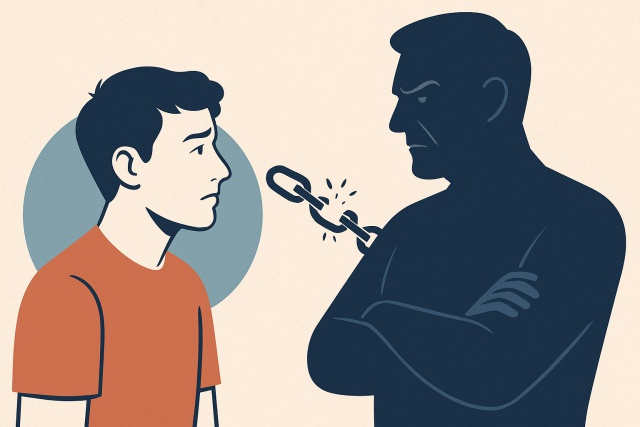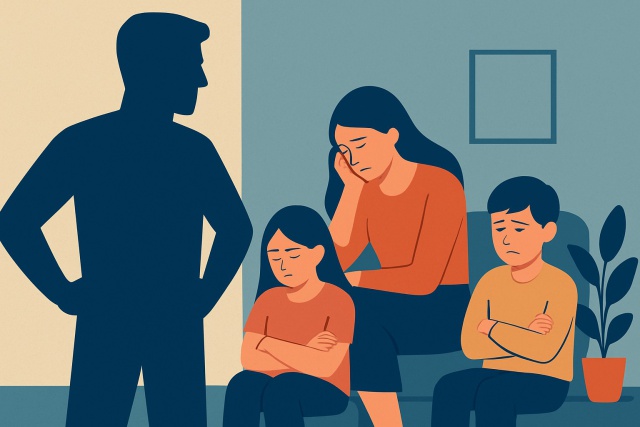
10 Signs of Trauma Bonding That Keep You Stuck
Trauma bonding can trap you in confusing relationships that feel like love but cause pain. Learn the...
It's about obsessive, intrusive actions that can really take a toll on the mental health and safety of everyone involved - victims and perpetrators alike. For therapists, recognizing the signs of stalking personality, whether faint or glaring, is key to providing the right kind of support at the right time.
This article lays out the key signs of stalking personality traits and takes a closer look at the psychological backdrop of these behaviors. It also offers practical advice for therapists aiming to spot and tackle stalking tendencies during therapy and boundary management.
A stalking personality is best understood as a stubborn pattern of behavior where someone fixates obsessively on another person. You’ll often see this popping up as repeated and sometimes intrusive monitoring or pursuit. Unlike occasional or situational stalking that might happen in certain moments, this kind reflects a steady, unrelenting fixation. The individual is either unable or unwilling to respect personal boundaries.
It is important to draw a clear line between a stalking personality and those isolated stalking incidents that might pop up in connection with specific situations or other mental health issues like psychosis or serious mood disorders.
Therapists usually pick up on stalking personality traits by tuning into client stories and noticing certain behaviors. They also put together what others report. These traits don’t just appear in loud or obvious ways like repeated unwanted contact. They show up through subtle psychological signs such as distorted ideas about relationships or difficulty accepting rejection.
People with stalking personalities often find themselves trapped in obsessive thoughts about their target and tend to lash out with anger or frustration when faced with confrontation. More often than not they shrug off the impact their actions have on others and play the blame game by pointing fingers at the victim to sidestep responsibility.
A number of psychological and social factors appear to weave together in shaping what we might call a stalking personality. Early disruptions in attachment and experiences of trauma often lay the groundwork for these vulnerabilities. You’ll also find patterns of codependency and unhealthy coping mechanisms around intimacy and control. These paint a picture of a tangled web of unmet emotional needs and learned behaviors.
Stalking behaviors can take many forms depending on the relationship type. In romantic relationships, it often appears as obsessive calls or watching someone long after a breakup. In the workplace, stalking might seem like harassment or a nagging feeling of constant monitoring that can grate on anyone’s nerves. For acquaintances or tricky online connections, cyberstalking and ongoing digital intrusion tend to steal the spotlight.
| Relationship Context | Common Stalking Behaviors | Motivations Behind Stalking | Typical Victim Profiles |
|---|---|---|---|
| Romantic Partners | Frequent calls, sending gifts, following, keeping tabs close | Driven by jealousy and that gnawing fear of being left out in the cold | Usually ex-partners or individuals caught up in one-sided romantic dreams |
| Workplace | Unwanted emails, lingering nearby, subtle social monitoring | Craving control or nursing a grudge, sometimes both | Colleagues, managers, or anyone stuck in the office web |
| Acquaintances | Repeated visits, watching closely, sometimes just hovering | Fueled by obsession or an intense need for connection | Former friends or neighbors who’ve crossed a line |
| Online Interactions | Cyberstalking, hacking, pretending to be someone else behind the screen | Using the cloak of online anonymity to control or obsess | Online contacts and social media acquaintances who’ve taken it too far |
Poor boundary-setting and codependent tendencies often sneak into the picture when it comes to stalking behaviors. Codependency usually means leaning way too heavily on others for emotional support and having a tough time respecting their need for space, which can manifest as intrusive or downright obsessive actions. This tricky blend of craving attachment and tipping into controlling behavior makes diagnosis and treatment a bit of a tangled web.
Therapists really need to draw a clear line between boundary issues that stem from codependency—those often melt away with some focused relationship work and a boost to self-esteem—and the more serious, downright dangerous stalking behaviors that demand firmer boundaries and might even call for legal steps.
Clinicians usually rely on interviews, behavior monitoring and collateral information to get a clear picture of stalking behaviors and personality traits. Using structured tools helps keep evaluations ethical and focused while prioritizing the safety of clients and victims alike. These assessments are not one-time events but ongoing processes that detect changing patterns and emerging risks over time.
Assessing for co-occurring disorders like PTSD and mood or personality disorders and substance abuse is essential because these conditions often appear with stalking behaviors. Take borderline personality disorder for example. People struggling with it might resort to stalking due to a deep fear of abandonment. On the other hand, substance misuse lowers inhibitions and makes impulsive actions more likely.
Therapists working with clients who display stalking personality traits often find it useful to lean on evidence-based interventions that emphasize clear and consistent boundary-setting paired with tried-and-true cognitive-behavioral therapies. These approaches aim to gently reshape entitlement beliefs, boost emotional regulation, and address trauma-related triggers head-on.
Finding the balance between therapeutic empathy and shielding victims while keeping professional responsibility front and center is important. Therapists have to be firm enough to convey the seriousness of stalking behaviors without losing the compassionate touch that encourages real change and support.

Stalking often gets lumped in with just criminal or violent behavior but that’s really only scratching the surface of some pretty complex psychological stuff going on underneath. Not every obsessive or intrusive act automatically spells stalking, and stalking itself doesn’t always end up causing physical harm. By clearing up these common misconceptions, therapists can approach stalking behaviors with a bit more nuance and care.
Therapists should watch for when stalking behaviors spiral beyond what they can handle in their clinical practice. This signals the need to refer the case to specialized services. Once risk factors increase, legal action, psychiatric hospitalization or victim advocacy support can become vital.
Handling stalking cases ethically requires recognizing the signs of stalking personality, along with a solid understanding of where confidentiality ends and the ins and outs of mandatory reporting laws. It also involves practical steps to keep victims as safe as possible. Therapists need to stay on top of the specific rules in their area and maintain open communication with multidisciplinary teams.

Trauma bonding can trap you in confusing relationships that feel like love but cause pain. Learn the...

Discover practical, step-by-step strategies to communicate with narcissists confidently without sacr...

Discover the 7 critical signs of a narcissistic father and how understanding these behaviors empower...

Discover how narcissistic father traits shape family dynamics, affect emotional well-being, and infl...